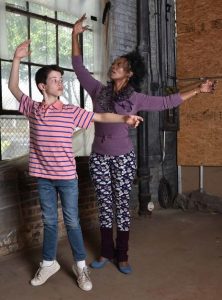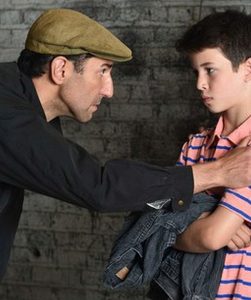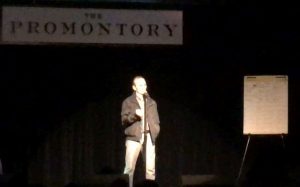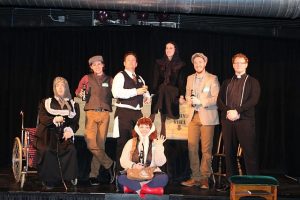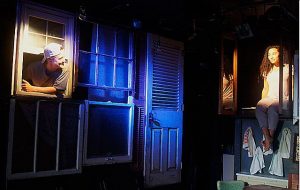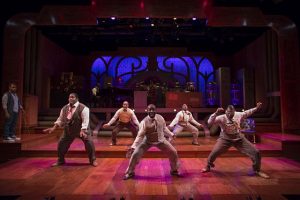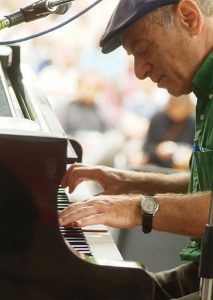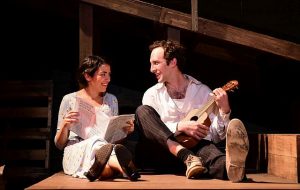HIGHLY RECOMMENDED
If what you remember of Emily Dickinson from high school literature is that she was a spinster recluse who wrote free verse poetry about death you will be happy to know that at the Court Theatre you will be spending time with a much different Dickinson. This one imagined herself to be “The Belle of Amherst.”
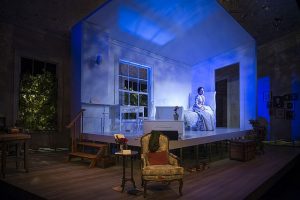
Maybe you asked, how could anyone who in adulthood never traveled more than a few miles from home, avoided her neighbors and had few if any friends, be an interesting subject for a one actor play.
But, sharing insights into her writing process, familial relations, lost loves and admirers, Kate Fry portrays a much spunkier, wittier version of the poetess than most of us imagined.
Fry grabs our attention the moment she makes her entrance and keeps the audience captivated for the remainder of the two-act play.
Captivated – now there is a word I believe Emily Dickinson “could take her hat off to.” She speaks of her love of words, how they look, how they sound and what they mean.
We learn that Dickinson did not have a love of life as we traditionally think of it. Rather she had a love of living. She says that just having life is the greatest thing imaginable.
When her poems are rejected for publication she says that like a bird she does not sing for others, she sings because she must sing. Likewise she lives because she must live and revels in the simple acts of living.
The action takes place on a visually stunning set designed by Arnel Sanciano – a kind of floating box within a box presented on an angle and a bit off center like the title subject.
The inner box is mostly monochrome with the only bright colors coming from glimpses of nature outside her windows and the numerous plants brought inside.
Sanciano’s set is perfectly complimented by the luminous effects of Lighting Designer Mike Durst who paints the monotone interior with wonderful shades of lavender and thoughtful shadows that augment the various moods of the many stories being told.
Since this is a play about words and a person who built her life around choosing just the right one, it is imperative that the dialogue can be heard distinctly and Sound Designers Andre Pluess and Christopher LaPorte do not disappoint us.
It may be a function of the excellent third row center seat I had but every word was clear as a bell (no pun intended) and did not have that artificial electronic sound.
My one minor criticism was the use of some background music that was periodically intended to enhance the mood. I found it more of a distraction particularly in one scene where it sounded like someone’s annoying cell phone melody.
Samantha Jones’ dresses for Fry were beautifully crafted, detailed and suited to the period.
A one performer play is indeed largely about the actor, who in this case was perfection but the overall production is all about the director.
In such a play the director is more important than ever because it is through him, in this case, Sean Graney that the performer gets all of her feedback.
It is up to the actor and the other crafts people to provide options and have the talent to execute ideas that emerge, but the director is truly the holder of the vision. He is the one who will decide what we all will see, and I like what I saw.
So in the end this is a true collaboration of stage craft. There is only one actor so the set, sound, and costumes are essential to help paint a fuller picture. Everything must be perfect and it really was.
DETAILS: ‘The Belle of Amherst’ by William Luce’ is at Court Theatre, 5535 S. Ellis Ave. on the University of Chicago campus through Dec. 3, 2017. Running time: 1 hour, 55 minutes with one intermission. For tickets and other information call (773) 753-4472 or visit Court Theatre.
Reno Lovison
For more shows visit TheatreinChicago.

